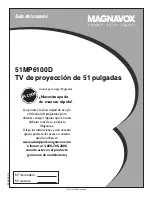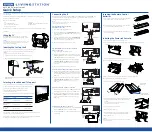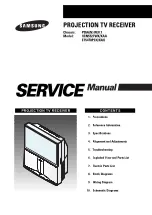
I-GARD DSP-OHMNI Instruction Manual
22
If no Feeder Faults are identified the Display Module will indicate BUS FAULT as in Figure 8.2 to indicate
this special situation. In this case the probability is that there is a fault upstream of the current sensors and
usually indicates a fault in the main transformer or bus duct which supplies the switchgear.
FAULT PHASE A
BUS FAULT IG 67%
Figure 8.2 Bus Fault
This screen may also be observed under other situations
as well
. For example if a fault develops on a faulty
DSP-DFM or the Module is missing or a Feeder has no protection on it at all, the same indication will result.
Another situation might be on a main-tie-main system with two DSP systems and a fault develops on one
side of the gear. The DSP-DM on the other side will indicate Alarm with a BUS FAULT if the tie is closed
since it does not ‘see’ any DSP-DFM on its side with a fault.
9
SELF – TEST
Basic functionality testing of the system can be done without interrupting circuit breakers. To enter the
Test the operator must be in the Home Screen and without a fault on the system at the time. Press SETUP
button. Using the ENTER key press 4 times until the SELF-TEST screen is reached, Select Y and ENTER to
access the Self-Test. The operator is prompted with the TEST SYSTEM test as in Figure 9.1
TEST SYSTEM?
Y/N
Figure 9.1 System-Test Prompt
To check the SYSTEM Module DSP-DSM, select Y and ENTER otherwise just push ENTER to move to the
Feeder Module Test.
If the SYSTEM was selected when ENTER is pressed
,
the Red Alarm lights on System Module and Display
Module will light and both the local and remote Alarm devices will sound. Check that the MUTE button
silences the Alarms effectively.
The prompt figure 9.2 for Feeder Module DSP-DFM automatically appears at this time. Select Y or ENTER
to perform the Feeder Module Test. Pressing ENTER will return the display to the Home Screen.
TEST FEEDER? Y/N
Figure 9.2 Prompt for Feeder Test
















































